Eating green is the first step in creating an eco-friendly kitchen, but it does not end there. If you want to have a really healthy kitchen, you should practice energy-efficient food preparation and cleaning practices, use equipment built from sustainable materials, and avoid harmful chemicals. Fortunately, choosing the best choices for your health is also beneficial for your wallet and the environment. From the fridge to the food to the cleaning, our clear and simple recommendations for creating earth-friendly meals can transform you into a greener gourmet in no time. Read on for our tips on how to go green in the kitchen.
Size and equipment, including plastic containers, aren’t nearly as important in kitchens as commitment, passion, common sense, and, of course, experience. To pretend otherwise – to spend tens of thousands of dollars or more on a kitchen before learning how to cook, as is unfortunately common – is to engage in the same kind of foolish consumerism that leads people to believe that an expensive gym membership will get them in shape or that the right bed will improve their sex life. Cooks cook in almost any situation, just as runners run and writers write.
#1 Purchase Long-Lasting Cookware
Choose equipment and utensils that will last and not be tossed away with your leftover dish. That means you’ll have to give up the Teflon. While the argument over the health risks of nonstick surfaces rages on, there is no denying that they have a finite useful life. Instead, use stainless steel or cast iron. A decent cast iron skillet, albeit an investment, will last for generations. Similarly, pick robust utensils over inexpensive ones; for example, low-quality wooden spoons will decay, and plastic containers can melt if left on the burner for too long. Purchase high-quality knives that can be sharpened by hand, and replace paper towels with long-lasting cloth towels. Cloth towels will make your kitchen more eco-friendly than paper towels.
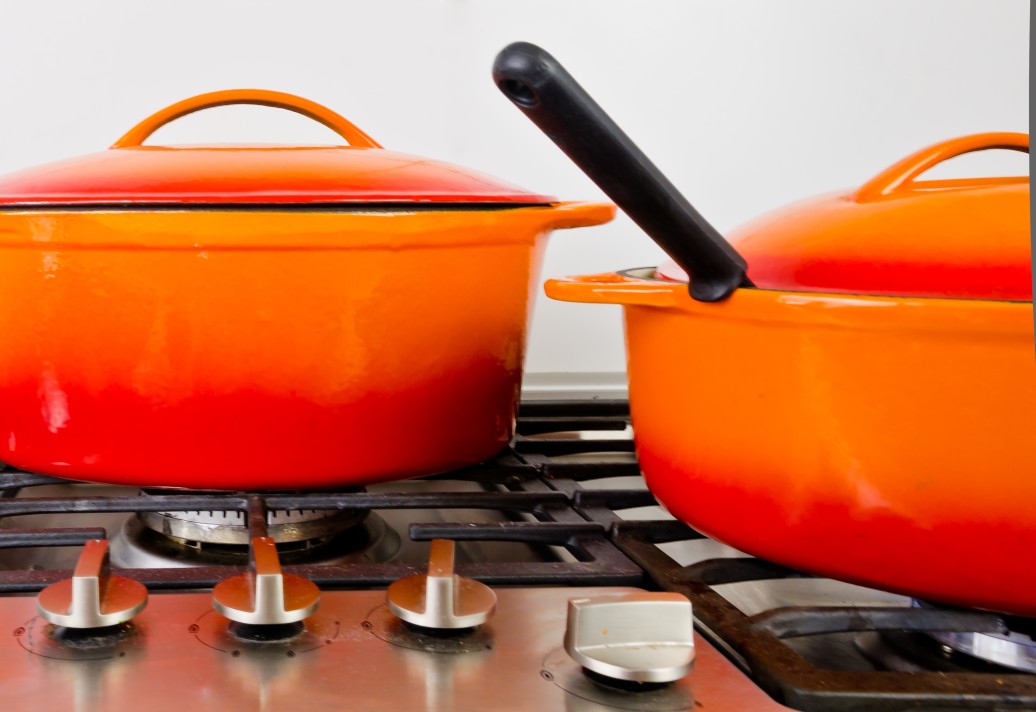
There’s nothing wrong with wanting to experiment with cooking, but before you go out and purchase a lot of equipment that you might only use once, see whether your community has a kitchen library. You might be able to find the energy-efficient appliances or equipment you require without spending money on something you won’t use.
#2 Select an Energy-Saving Stove
When it comes to the stove, it might be difficult to choose between gas and electric; natural gas is a fossil fuel, but coal-burning power plants generate most energy in the United States.
The stove you eventually choose will most likely be determined by price and lifestyle, so the greenest choice you can make is to select an option that you’ll be able to live with for at least a decade or more, which will save on materials and resources during the production process.
Gas Cooking Appliances
From a pure cooking standpoint, many cooks choose gas because it is easier to regulate temperatures; it also provides instant-on heat and does not lose much heat after cooking is completed. If you’re looking for a new gas stove, consider that the lower the BTU output, the more energy-efficient your stove will be.
However, keep in mind that gas stoves are typically unhealthier than electric stoves since they may emit up to 39% more NO2 and CO to the air in the house.
Cooktops with Induction Heating
The most energy-efficient electric stoves employ induction elements, which transmit electromagnetic energy straight to the pan, leaving the cook-top relatively cold and requiring less than half the energy of ordinary coil elements. One disadvantage is that induction cook-tops need the use of metal cookware such as stainless steel, cast iron, or enameled iron – aluminum and glass pots will not work – and because the technology is still new, they are often found exclusively in higher-priced versions.
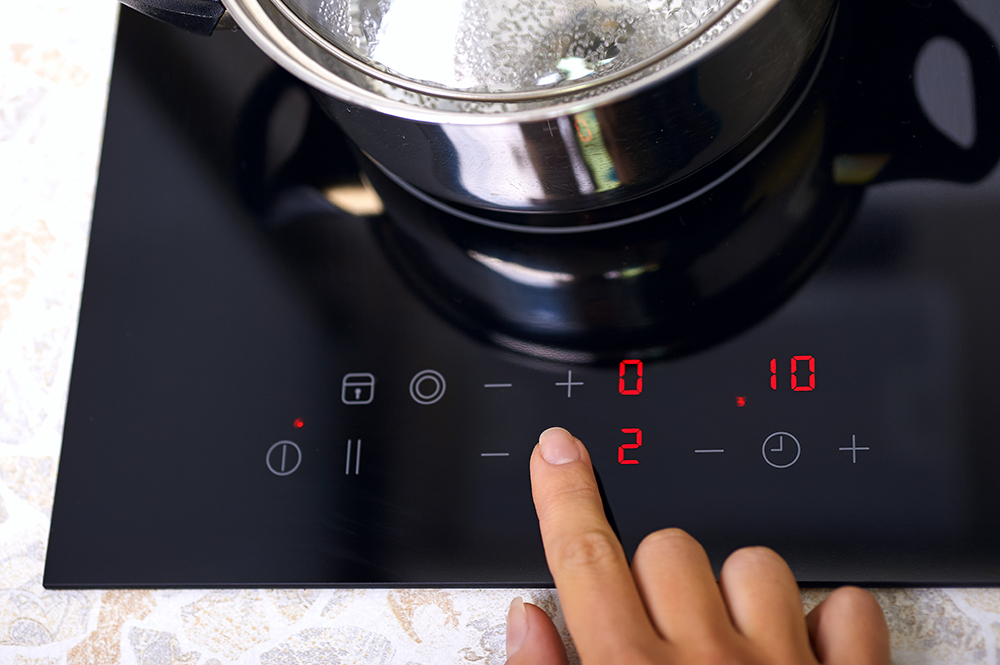
Woman hand includes modern induction stove
Cooktops Made of Ceramic-Glass
The same is true for units with ceramic-glass surfaces that employ halogen elements as the heat source, making them the second-best option in terms of efficiency. These provide immediate heat and respond fast to temperature fluctuations. (They’re also straightforward to clean, which is a plus.) However, they only operate efficiently when there is good contact between the pan and the heated glass surface; if pan bottoms are slightly rounded, energy will be wasted.
Coils for Electricity
Standard electric coils – the spiral kinds we’re all familiar with – are, by the way, at the bottom of the barrel in terms of energy efficiency. If you decide on an electric stove, pick the most energy-efficient model feasible, and then purchase green power to support electricity from clean, renewable sources.
#3 Think About Your Appliances
Energy-efficiency improvements are arriving at a rapid pace to many modern appliances. A good dishwasher, for example, may use a lot less water than hand-washing dishes in the sink. However, before you jump the gun and make a hurried appliance purchase, make sure that a repair isn’t required. If the time has come to get rid of an old appliance, keep in mind that many towns have take-back programs that will assist you in safely disposing of these items, which may contain dangerous chemicals and materials.
When replacing your old faithful, search for the Energy Star certification, which is available for kitchen appliances such as stoves, refrigerators, freezers, and dishwashers, then pick a strong model that will endure and a simple design – your oven does not require an internet connection. You also don’t require an oven exhaust, which is typically poorly constructed and inefficient equipment.
Think small when purchasing a new refrigerator. Many foods would last longer if they were not stored in the refrigerator in the first place. Fruit, for example, rots considerably faster in the fridge because the ethylene gas it emits as it ripens becomes trapped. Buying a smaller fridge and putting less in it saves you a lot of energy as well as your food!
#4 Cook in an Energy-Efficient Manner
Many common cooking methods consume energy that isn’t required. A few easy changes to your cooking practices may go a long way toward making your kitchen more environmentally friendly.
Prevent Preheating
Preheating is nearly archaic. Many modern ovens heat up so quickly that preheating is unnecessary (save for soufflés and other delicate foods). If you’re roasting or baking something with a variable cooking time, you may put it in straight away, then turn the oven off five or ten minutes early and allow the items to continue cooking in the residual heat. (The same goes for anything cooked on an electric stovetop.)
Limit your use of the oven.
Making the best use of the oven possible, such as cooking more than one dish at a time, is also a good idea. Using a toaster oven or reheating in a microwave for small meals can also save energy; in fact, Energy Star predicts that using the microwave instead of the oven can save up to 80% of cooking energy.
Use Your Stoves Wisely
When cooking on the stove, choosing a suitably sized pot for each of the stove burners makes a difference; for example, on an electric stove, a 6-inch pot used on an 8-inch burner loses more than 40% of the burner’s heat. Make sure all of your pots and pans have tight-fitting lids and use them whenever possible—including when bringing boiling water up to temperature—to cut cooking time and keep heat where it belongs—in the pan.
Consider using a pressure cooker.
Another fantastic option to save energy is to use a pressure cooker, which may cut cooking time by up to 70%.
Consume raw foods.
Of course, the most energy-efficient cooking is eliminating heat—don’t forget salads, chilled soups, and other meals that take minimal prep and can be served cold. There is a developing niche culture centered on raw food—don’t be scared to try something new.
#5 Make Everything From Scratch
Avoid buying pre-prepared, frozen foods and make them yourself at home; many meals are designed to be frozen and reheated without loss of taste or quality, so there’s no reason to thaw and rehydrate frozen and dried foods when you can buy and cook fresh instead. As an extra benefit, you know precisely what’s in your food and, if you’re careful about sourcing, where it came from. This approach also eliminates portions of your food’s lifetime (and the associated energy in processing and transportation that comes from each step).

If you have the room, go one step further and produce your own fruits and veggies using composted kitchen trash as fertilizer.
But don’t stop there: you can use white vinegar and baking soda to clean your countertops and hand-wash your dishes. Instead of buying bottled water, invest in a filter pitcher or a tap filter. You could even buy a seltzer siphon or carbonator to fizz your filtered water and flavor it with homemade syrups; the Soda-Club or one of its contemporaries is recommended.
#6 Purchase Local Ingredients
The food you bring into your kitchen is as essential as the tools and equipment you have, so shop locally whenever possible. Food miles have moved to the top of the list of environmentally friendly food considerations, and the fewer kilometers from farm to table, the better. Organic Chilean grapes may taste nice in the dead of winter, but consider the pollution created by transporting them to wherever you are.
Furthermore, because they lack preservatives, biocides, and many other nasties found in conventional meals, organic goods might decay faster, which means that the longer your bunch of grapes is in transit, the less immaculate its state is likely to be.
We advocate supporting community-supported agriculture (CSA) co-ops, shopping at local farmers’ markets, or buying directly from farmers wherever feasible.
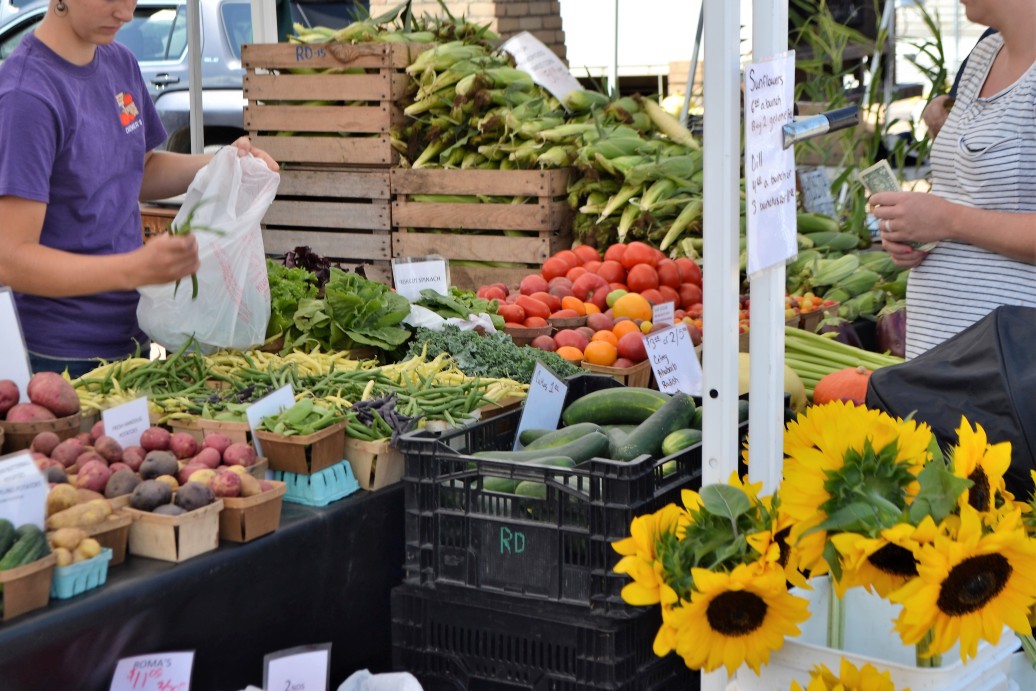
#7 Buy in bulk and cook in bulk
Buy and cook in quantity; be sure you can eat everything you buy and produce! (For additional information, see Waste Not, Want Not below.)
Buying in bulk means less packing and fewer trips to the shop, as well as potential financial savings. It’s not only for groceries, either: you can buy large quantities of vehicle washing and detailing towels and use them in the kitchen. They’re incredibly durable and significantly less expensive than other kitchen towels (not to mention much less disposable than paper towels).
Bulk cooking is a more effective use of appliance energy and your time (as well as a wonderful reason to have a party), so make a big pot of soup and plan on storing (and eating) lots of leftovers. Also, plan ahead of time; preparing meals that will feed you and your family for a few days is a fantastic way to save money and free up your valuable spare time.
#8 Don’t Waste Time
The kitchen creates the most trash of any area in your house on average; one of the primary causes is the excessive packaging on grocery shelves. But don’t worry, reducing food waste isn’t as difficult as it may appear.
Step One: Refuse unnecessary packaging by bringing your own bags, purchasing fresh, unwrapped produce, and carefully considering how your purchases are packaged.
Step Two: Avoid oversized quantities; if you’re always throwing food away, you’re purchasing and cooking too much.
Step Three: Reuse what you can, such as old glass jars or bottles, supermarket bags, and unavoidable packaging.
Step Four: Compost any uncooked organic household and yard waste (including cardboard and paper), and don’t worry if you don’t have a garden to spread your delicious hummus on. Even in large cities, many farmers’ markets and non-profit groups would gladly welcome your compost. After all of this, if there’s anything leftover, make a point of checking the recycling bin before throwing anything out.
#9 Make use of eco-friendly kitchen cleaners.
The ingredients list for typical petrochemical based dishwashing solutions, detergents, floor and surface cleaners, and other home cleaning products is enough to make anyone sick. Fortunately, several natural cleaning firms provide non-toxic, biodegradable, plant-based detergents. And, as indicated in the Do It Yourself advice above, you can always manufacture your own cleaning products out of common household items like vinegar and baking soda, which combine to form a fantastic all-purpose, non-toxic cleaner.
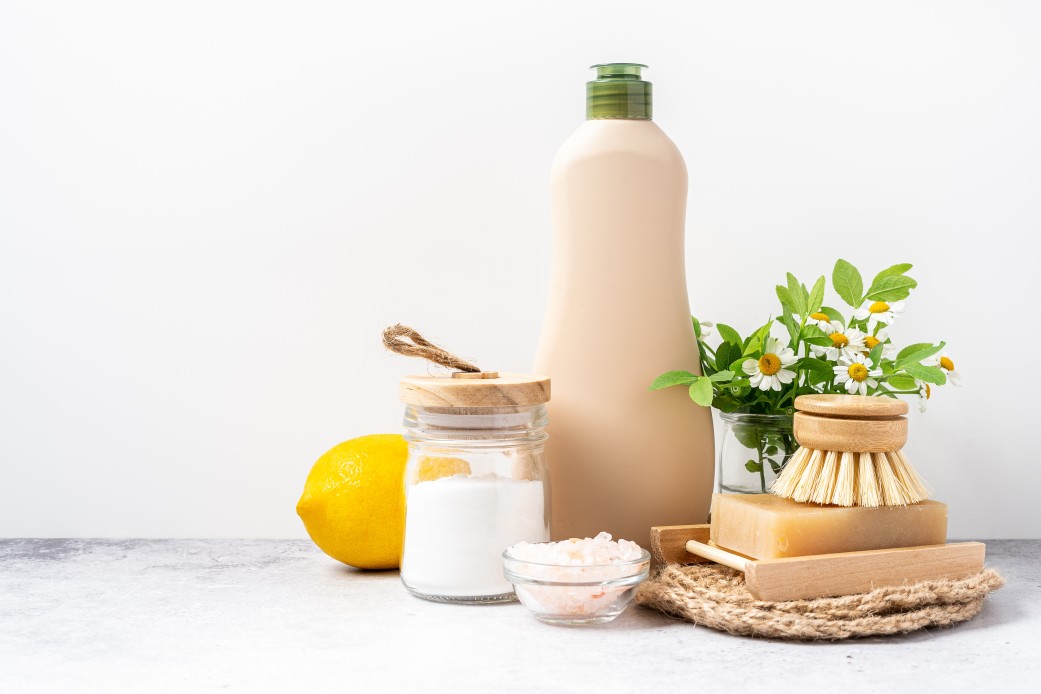
#10 Recycle When Remodeling
Of course, making your old kitchen work for you is the most environmentally friendly alternative. Still, even the most environmentally conscious people need to upgrade or replace their appliances from time to time. If you’re looking for a new kitchen, start with salvage and antiques.
They don’t manufacture ’em like they used to, so look for kitchen fittings, flooring, paneling, and cabinets that had a prior life are one-of-a-kind and have previously weathered the test of time. If you’re exchanging items, make sure to post them on Freecycle or Craigslist first before tossing them out.
If recycled materials aren’t a possibility, there are lots of green choices for new materials. Green worktops made of recycled paper and yogurt pots, to bamboo and cork flooring — conduct your research on the various alternatives and their environmental effect (remember, not all bamboo is created equal), and stay tuned to the Green Guides additional remodeling ideas.

Favorite Green Kitchen Tools
The kitchen gadgets listed below are just a few examples of those that may help you cook and preserve food in a more ecologically responsible manner.
Pressure Cookers are sealed cooking pots that do not allow air or liquids to escape below certain pressure. Because the boiling point of water rises as the pressure within the cooker rises, a pressure cooker allows the liquid in the pot to reach temperatures higher than 100 °C (212 °F) before boiling, significantly shortening cooking periods.
Ovens powered by the sun.
Solar ovens are insulated boxes with a glass cover that allow the sun’s rays to heat the inside of the box in the same way that a greenhouse does. They may also incorporate reflectors that focus on solar energy, raising the temperature in the oven.
Solar ovens are frequently promoted by humanitarian organizations in areas where deforestation is a problem. Still, they are also gaining popularity in the developed world. They are gaining a reputation for producing intense, bold flavors that can only be achieved through slow, careful, sun-powered cooking.
Freezers for the chest
The traditional type with a horizontal lid, Chest freezers, are far more efficient than their vertical equivalents. One of the primary reasons for this is that heat rises, and cold air falls, so when you open the door of a standard freezer, the cold air falls out.
The air in the chest freezer, on the other hand, remains where it was when the door was opened. Freezers may be made even more effective by storing them in a cold location, such as an outdoor plastic food storage room, basement, or garage. They can even be covered with additional insulating material.
Slow Cookers
Slow cooking using crock pots is an excellent way to cook while conserving electricity. Once warmed up, the crock pot’s insulation can keep it hot for up to 6 hours. Talk about lowering your power cost. Slow cooking is another excellent method for producing tasty meals.

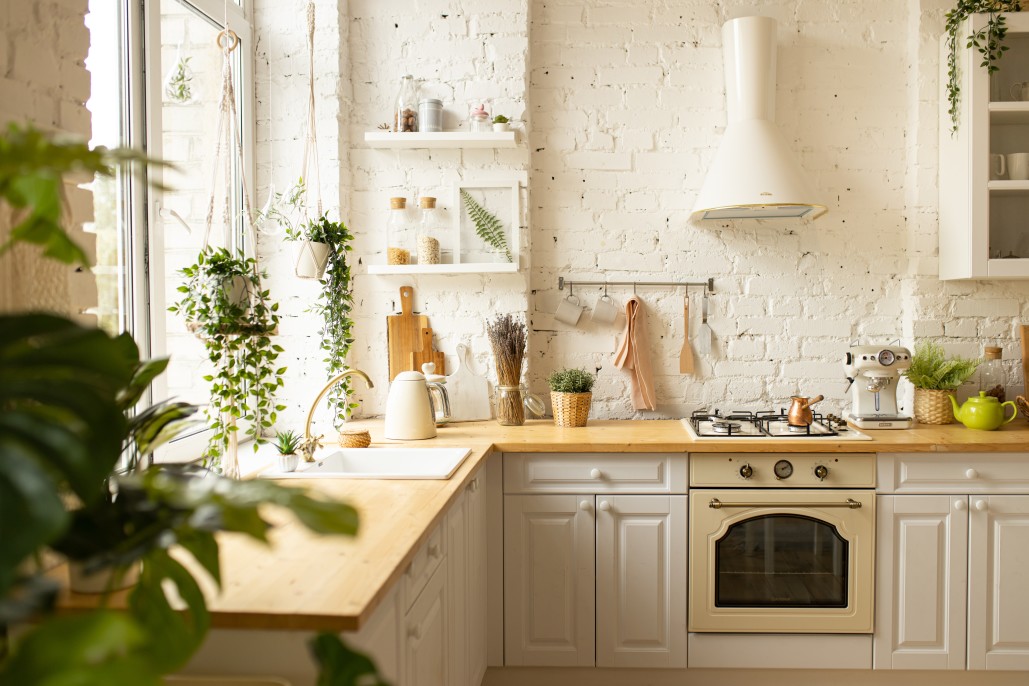
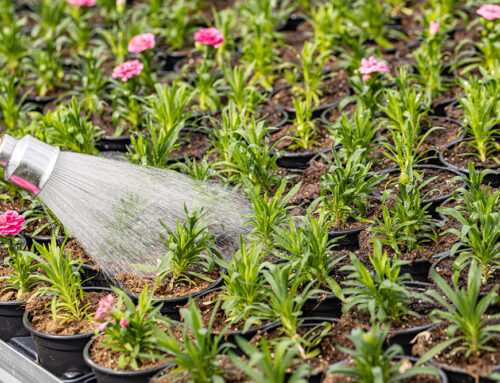

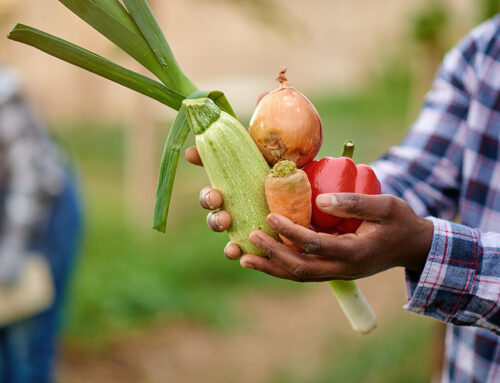
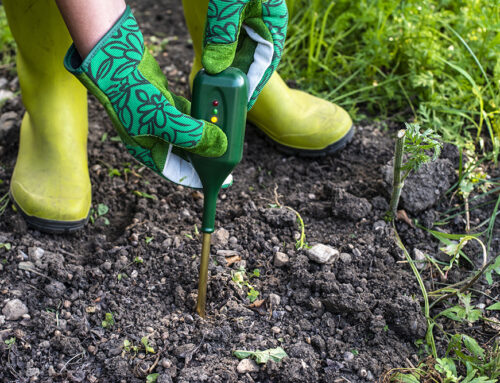
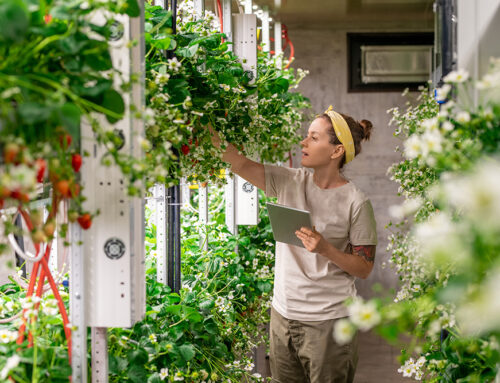
Leave A Comment